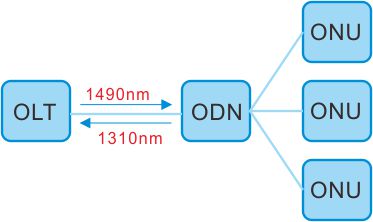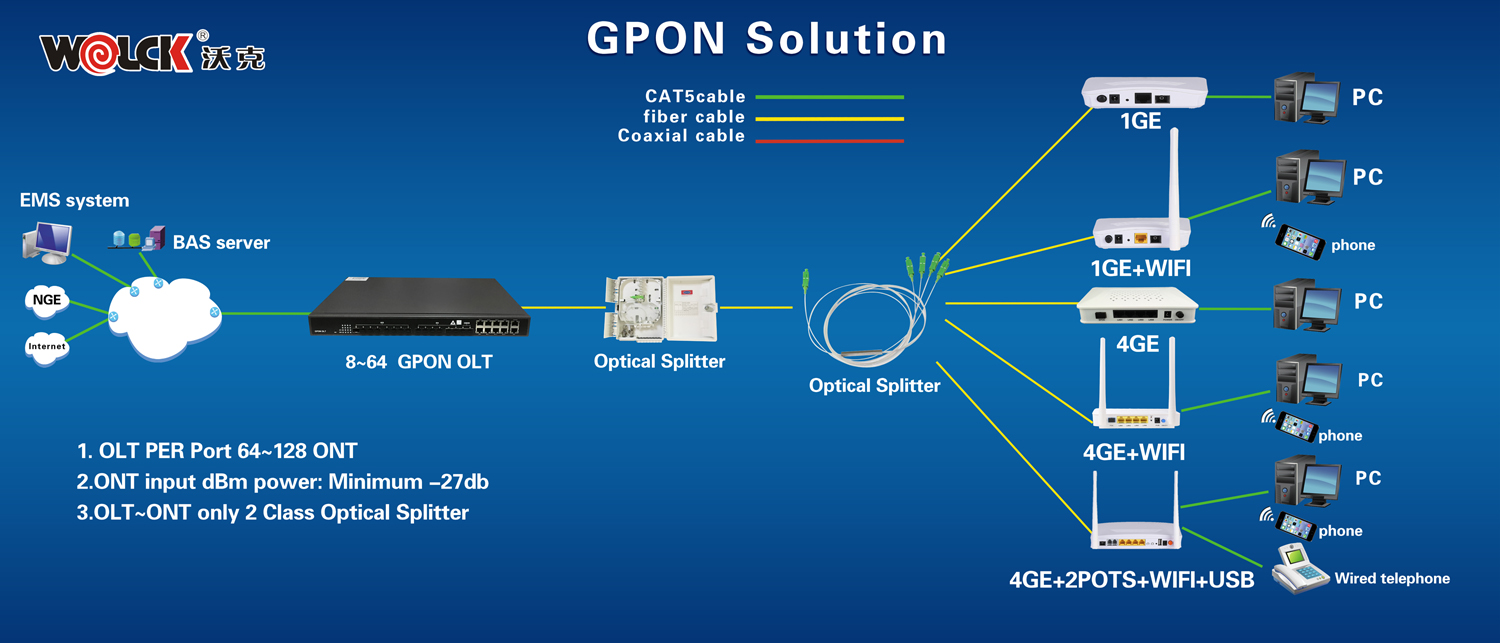
 |
Figure 2 FTTH solution based on PON system
FTTH solution based on PON system:The central office (computer room) OLT is the core of the entire PON system, providing a high-speed interface for accessing information such as voice and data, and providing a PON interface for the passive optical distribution network downward. The OLT is the control center of the PON system, through which the network management system completes the operation, management, and maintenance of the PON system.The client ONU provides users with service interfaces such as data, network video, and telephone. The protocols such as Ethernet and GEM are used to implement transparent transmission of user data by the PON system. The ODN network between the OLT and the ONU is a passive optical distribution network composed of an optical splitter and an optical fiber. Its function is to complete the distribution and convergence of optical signals, so that downlink data is distributed to each ONU terminal, and uplink data is aggregated. Go to the OLT device. The ODN network can be based on the actual use environment, and can adopt the first-level splitting or two-stage splitting scheme. WOLCK has EPON and GPON products that meet diverse application scenarios. Including box, plug-in, mini, field OLT products, as well as SFU, HGU and CATV functional models and other rich ONU products. OLT products include box OLT, compact OLT, plug-in OLT and field OLT products. The box OLT and mini OLT series products are 1U height and support 19-inch standard rack-mounting. They are compact, convenient, flexible, easy to deploy, and high-performance. They meet the requirements of equipment performance and volume in a compact machine room environment. The mini OLT is smaller and fits the installation requirements in the corridor or equipment box. Plug-in OLT products can be configured with different numbers of boards according to application requirements. They are highly integrated, highly flexible, and easy to manage and configure. They are cost-effective products that meet medium and large network access requirements. The field-type OLT adopts a cast aluminum IP65-grade waterproof enclosure to meet the needs of poles, floor boxes or corridors. The products are mainly for the two-way network construction of broadcasting and television networks and the telecom operators to provide the last mile of fiber access, large customer broadband access solutions, and also for the three networks of government, public security, large enterprises, network, voice and video integrated access. An application and HD video surveillance system. Related productsGPON products:OLT: box OLT and rack OLT (plug-in type); ONU: data type, data + voice type, data + WiFi type, data + voice + WiFi type; EPON products: OLT: box OLT, rack OLT (plug-in type), field type OLT; ONU: data type, data + voice type, data + WiFi type, data + voice + WiFi type; |